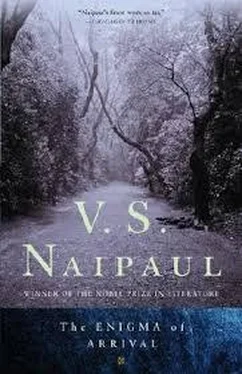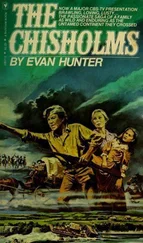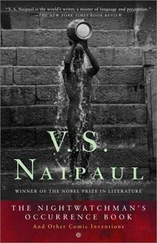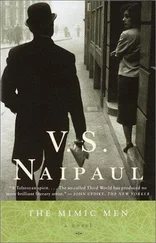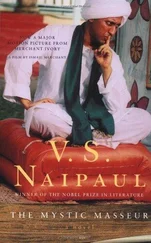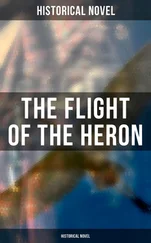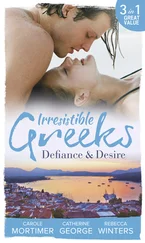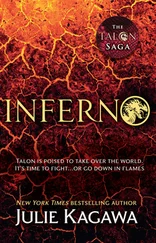V. Naipaul - The Enigma of Arrival
Здесь есть возможность читать онлайн «V. Naipaul - The Enigma of Arrival» весь текст электронной книги совершенно бесплатно (целиком полную версию без сокращений). В некоторых случаях можно слушать аудио, скачать через торрент в формате fb2 и присутствует краткое содержание. Год выпуска: 2012, Издательство: Picador, Жанр: Современная проза, на английском языке. Описание произведения, (предисловие) а так же отзывы посетителей доступны на портале библиотеки ЛибКат.
- Название:The Enigma of Arrival
- Автор:
- Издательство:Picador
- Жанр:
- Год:2012
- ISBN:нет данных
- Рейтинг книги:3 / 5. Голосов: 1
-
Избранное:Добавить в избранное
- Отзывы:
-
Ваша оценка:
- 60
- 1
- 2
- 3
- 4
- 5
The Enigma of Arrival: краткое содержание, описание и аннотация
Предлагаем к чтению аннотацию, описание, краткое содержание или предисловие (зависит от того, что написал сам автор книги «The Enigma of Arrival»). Если вы не нашли необходимую информацию о книге — напишите в комментариях, мы постараемся отыскать её.
The Enigma of Arrival — читать онлайн бесплатно полную книгу (весь текст) целиком
Ниже представлен текст книги, разбитый по страницам. Система сохранения места последней прочитанной страницы, позволяет с удобством читать онлайн бесплатно книгу «The Enigma of Arrival», без необходимости каждый раз заново искать на чём Вы остановились. Поставьте закладку, и сможете в любой момент перейти на страницу, на которой закончили чтение.
Интервал:
Закладка:
Now in Trinidad — leaving aside the people and the anger that was like madness — to see the landscape I had created in my imagination for the last two years, to look for the aboriginal, pre-Columbus island, I had to ignore almost everything that leapt out at the eye, and almost everything in the vegetation I had been trained to see as tropical and local, part of our travel-poster beauty — coconut, sugarcane, bamboo, mango, bougainvillea, poinsettia — since all those plants and trees had been imported later with the settlement and the plantations. The landscape of the past existed only in fragments. To see one such fragment I looked at the drying-up mangrove swamp — green thick leaves, black roots, black mud — outside Port of Spain, ignoring the rubbish-strewn highway and the bent and battered median rail and the burning rubbish dump and the dust-blown shack settlement beyond the highway and the shacks on the hills of the Northern Range. From the top of Laventille Hill, among the shacks, I could imagine myself at the beginning of things if I looked selectively down at the Gulf of Paria — gray, leaden, never blue — and the islets in the gulf.
Private that view I forced on myself, private the romance. My vision of the history was not the vision that set the young black people marching in the streets and threatening another false revolution. The story had not stopped where my book had stopped; the story was going on. Two hundred years on, another Haiti was preparing, I thought: a wish to destroy a world judged corrupt and too full of pain, to turn one’s back on it, rather than to improve it. After the book I had written, after my two years’ exaltation, I saw this anger from two sides: from the side of the Negroes, the people with the hair, and also from the side of the Asian-Indian community, the people mainly threatened, not black, not white.
I went on after a fortnight to St. Kitts and Anguilla, to do my articles. St. Kitts was very small, thirty thousand people. It had no Asian-Indian population and therefore, for me, no personal complication. To the Negroes there I was just a stranger, someone not black, and with straight hair. Judgments could be as simple as that here. This absence of personal complication, the smallness, and the simplicity of the geography made the past extraordinarily graphic.
St. Kitts was the earliest British colony in the Caribbean, established in a region from which Spain had withdrawn. In shape it was — apart from a tail — round. It had a central mountain, forested at the top; and the slopes, covered with even sugarcane, ran all the way down to the sea. The island was edged with a narrow asphalt road, and there were the little houses of the workers, descendants of slaves, along this road. Sugar and slavery had created that simplicity, that unnaturalness in the vegetation and landscape.
In a shallow, dry ford not far from this littoral road there were boulders in the sugarcane. These boulders were incised with very rough figures: aboriginal Indian work: the earlier past, a reminder of the horror before slavery. No aboriginal Indians now existed in St. Kitts; they had been killed off three hundred years before by English and French; the rough carvings on those boulders were the only memorials the Indians had left. The accessible past was the English church and churchyard — in a tropical setting. No yews; instead, the palms known as royal palms, with straight and stout gray trunks, with grainy ridges all the way up like healed wounds, each ridge marking the place where a frond had grown. (And how different, in this colonial setting, were the associations of an English churchyard from the associations of a churchyard in England!) The past was also accessible in the eighteenth-century main square, called Pall Mall, of the little town, where newly arrived slaves from Africa were put up for sale after being rested in the barracoons. For one hundred and fifty years in St. Kitts the memory of this past had lain dormant. Now, in mimicry of Trinidad and the United States and other places, the memory revived, when the memory had really ceased to humiliate, serving instead as a political stimulus, a communal rhetoric of sentimentality and anger.
And in the island of Anguilla, even smaller than St. Kitts, not green, less productive, there was another aspect of that three-hundred-year-old slave simplicity. The people of Anguilla were not pure black; they had their own past; they were separated by that past from the people of St. Kitts. The population of Anguilla — there were about six thousand people in all — was made up of a few mulatto clans with British names. They had the vaguest idea of their history, of how they had got to that flat barrenness in the Caribbean Sea so far from the big continents, so far even from the other islands; some people spoke of a shipwreck.
I saw all this under the spell of the book I had written, the past I had discovered far away in England from the documents and felt I had almost created, as much as my novels had been created. And still under that spell, I went on later to Belize. To do that, I had to go to Jamaica first; from Jamaica there was one airplane a week.
It stopped at Guatemala City. In the dark airport building — beyond the jagged, mud-colored volcano craters that the airplane, landing, had shown: like giant anthills or like the extravagant towers of a fairy tale, on the level surfaces of which houses clung in clusters — in the lounge of the airport building, when I saw the faces of the short, plump girls behind the counter and saw the fresh-vegetable or fresh-pepper relishes in the glass case, I remembered that this was absolutely my first time in Central America, my first time in the land laid waste by Cortés and his successors. The girls were Chinese-looking, but they were not Chinese. That half familiarity made them very strange, remote. And those chopped-up vegetable relishes in the glass case — they suggested a matching strangeness. Foods distinguish cultures and even historical epochs. (What would the food of ancient Rome have been like?) And I remembered reading somewhere that the chocolate drink consumed by the jar in Montezuma’s court was drunk cold and bitter and spiced.
In the glimpse of the strange food; in the strange, Chinese but not Chinese faces of the girls behind the counter; in the Spanish but not Spanish of the menu boards; in the fairy-tale volcanic spires of the land outside; in the vegetables and flowers that grew unnaturally large and bright in the high, clear, temperate air, I had an intimation of the wonder of the New World and the tragedy and pathos of the Spanish usurpation.
It was a short flight on to Belize City — Belize, British Honduras, the British intrusion on the coast of the Spanish Empire, the British mahogany colony, the origin of the Guatemalan claim to Belize (the subject of my article), and the source of much of the Georgian furniture in the London salerooms (but there was no mahogany in Belize now; it had all been cut down). On the coast there would have been among the Negroes descendants of the slave mahogany log cutters. Inland, there was a Mayan population and there were mighty Mayan ruins. In the shadow of one such ruin a Mayan boy (whatever his private emotions) giggled when I tried to talk to him about the monument. He giggled and covered his mouth; he seemed to be embarrassed. He was like a person asking to be forgiven for the absurdities of long ago; though there was no British colonial architecture worth the name in the mahogany colony, and all the monuments were Mayan. To the north, near the Mexican border, and still barely excavated, there was a whole Mayan town, abandoned centuries before the coming of the Spaniards, and now covered by forest, every tall, steep-stepped temple making a green hill.
From London to Trinidad to St. Kitts and Anguilla, Guatemala City and Belize: the journey might have been planned by a man wishing to move backwards in time, to see his history take concrete expression. So that for many weeks after finishing my book I continued to exist in its aura and exaltation, finding confirmation of the world I had dreamed about and created from the documents.
Читать дальшеИнтервал:
Закладка:
Похожие книги на «The Enigma of Arrival»
Представляем Вашему вниманию похожие книги на «The Enigma of Arrival» списком для выбора. Мы отобрали схожую по названию и смыслу литературу в надежде предоставить читателям больше вариантов отыскать новые, интересные, ещё непрочитанные произведения.
Обсуждение, отзывы о книге «The Enigma of Arrival» и просто собственные мнения читателей. Оставьте ваши комментарии, напишите, что Вы думаете о произведении, его смысле или главных героях. Укажите что конкретно понравилось, а что нет, и почему Вы так считаете.
